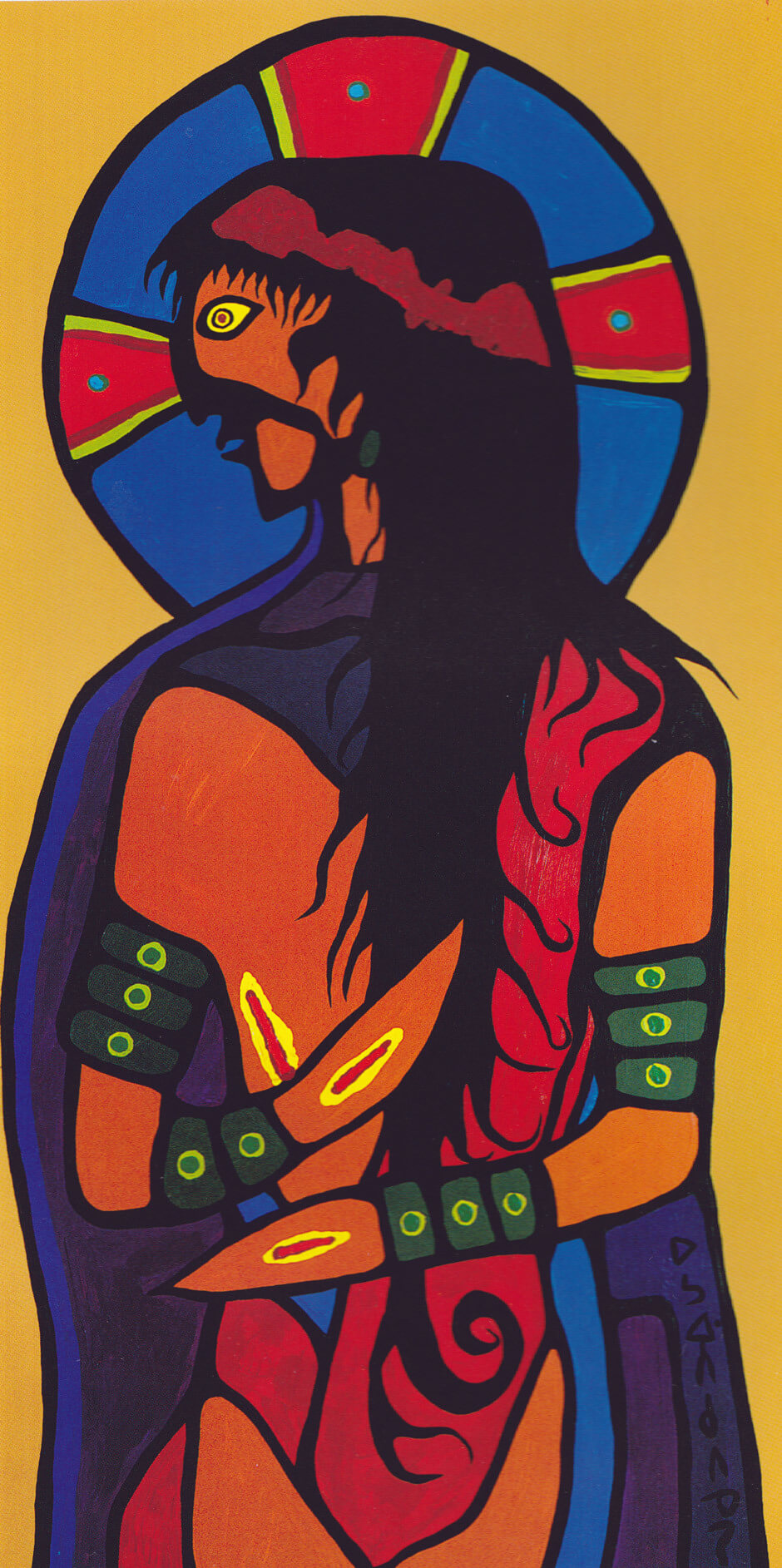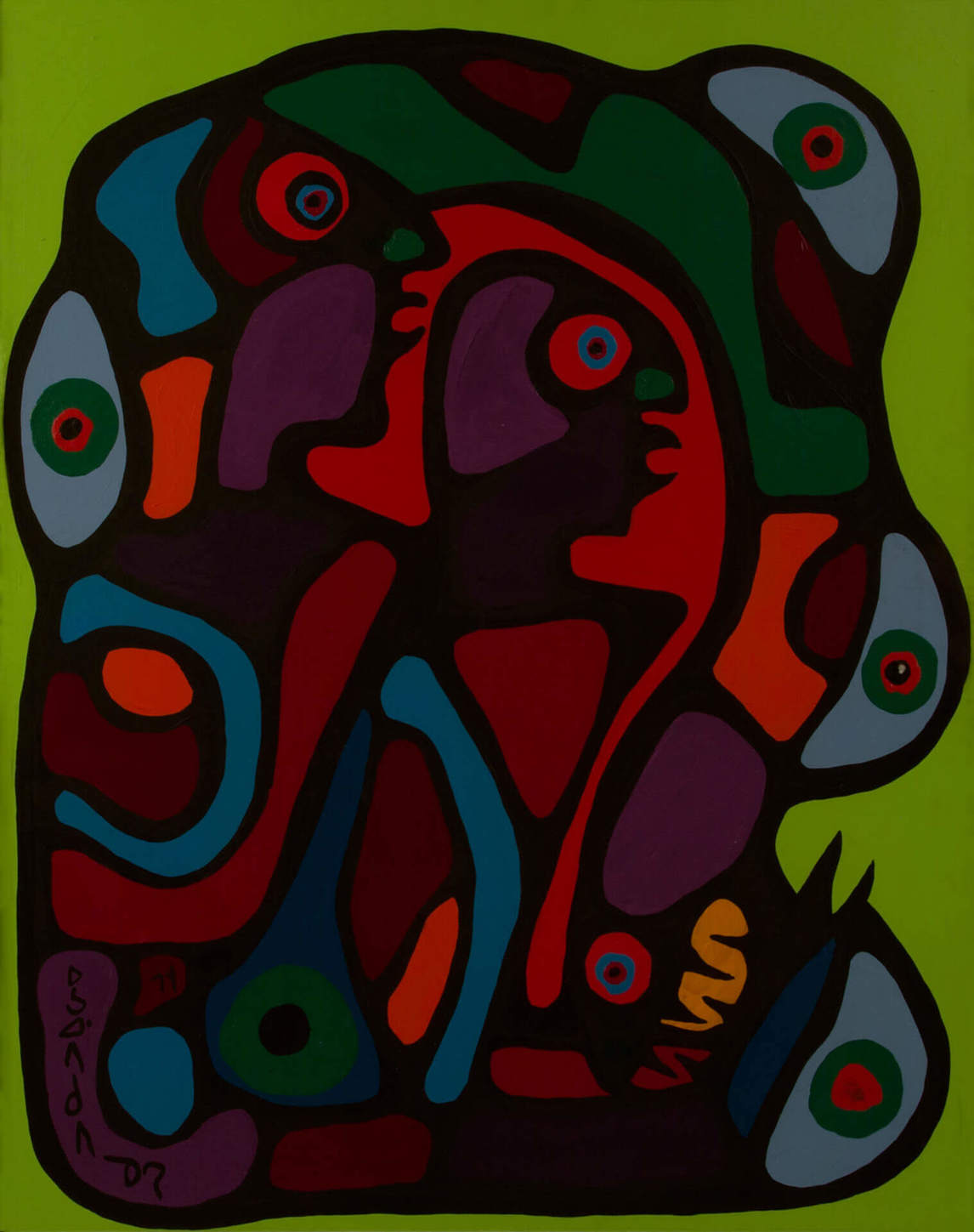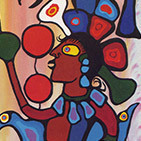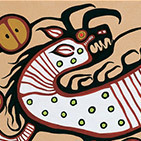Indian Jesus Christ 1974

Norval Morrisseau, Indian Jesus Christ, 1974
Acrylic on paper, 134.6 x 68.5 cm
Aboriginal Affairs and Northern Development Canada Aboriginal Art Collection, Gatineau, QC

Indian Jesus Christ was made famous in the 1974 National Film Board documentary The Paradox of Norval Morrisseau, in which the artist states, “Jesus died for the white man, not for Indians.” As the painting is shown onscreen, the lyrics of a song written by Duke Redbird and sung by Ojibway singer-songwriter Shingoose suggest, “You painted their Jesus, to expose their hypocrisy.” Given Norval Morrisseau’s experience of sexual abuse at a Catholic residential school as a boy, such pointed comments are not surprising. However, this canvas and its representation in the film created controversy. Seemingly struggling to counter Morrisseau’s comments, the narrator of the documentary describes the artist as someone seeking refuge in Christianity.
Before he presented Christ as Indigenous in this painting, Morrisseau had already illustrated a number of Indigenized Christian subjects, including representations of Christ (1966, 1972), the Virgin Mary (1962, 1973), and John the Baptist (1973). In 1966, he even painted himself as a haloed Jesus Christ carrying two medicine bags and wearing a Midewiwin shamanic hood and a cross in Portrait of the Artist as Jesus Christ. Morrisseau painted another representation of himself as Christ in Midewiwin robes in 1972; it was published in the Toronto Star newspaper that year with an accompanying article that noted Morrisseau was “torn between two cultures.” Ironically, these conflations of Christian and Anishinaabe symbolism caused little stir. Indian Jesus Christ, then, illustrates the complex colonial landscape in which Morrisseau was living.

 About the Author
About the Author
 More Online Art Books
More Online Art Books
 Acknowledgements
Acknowledgements